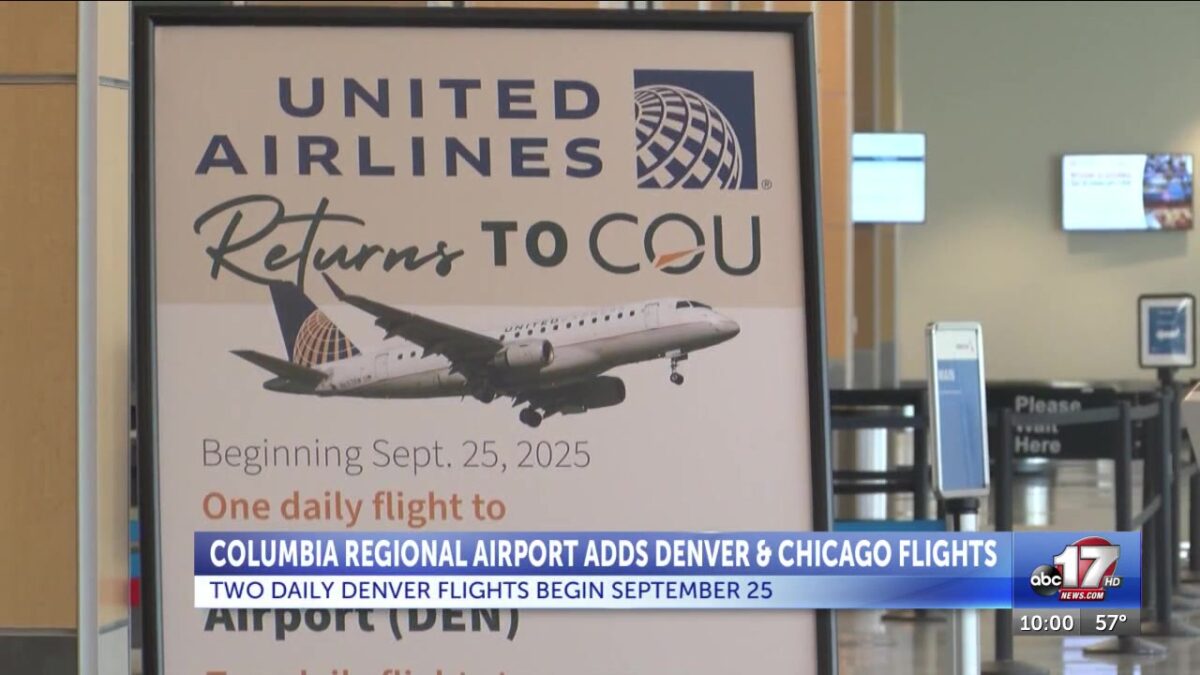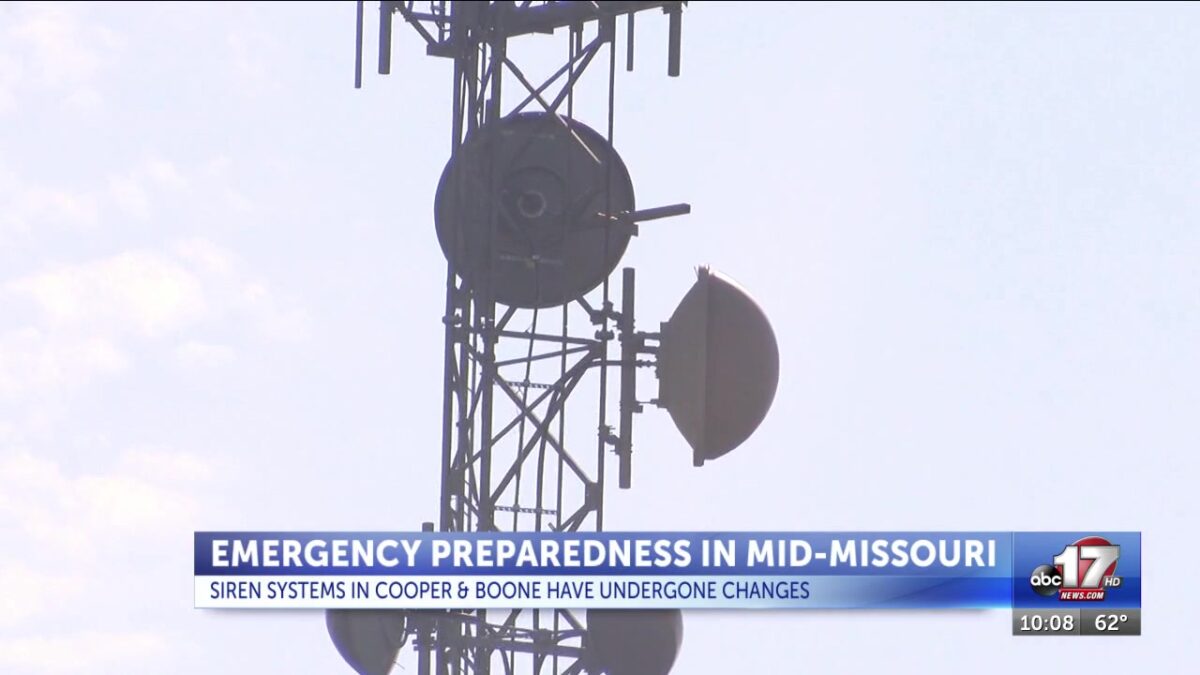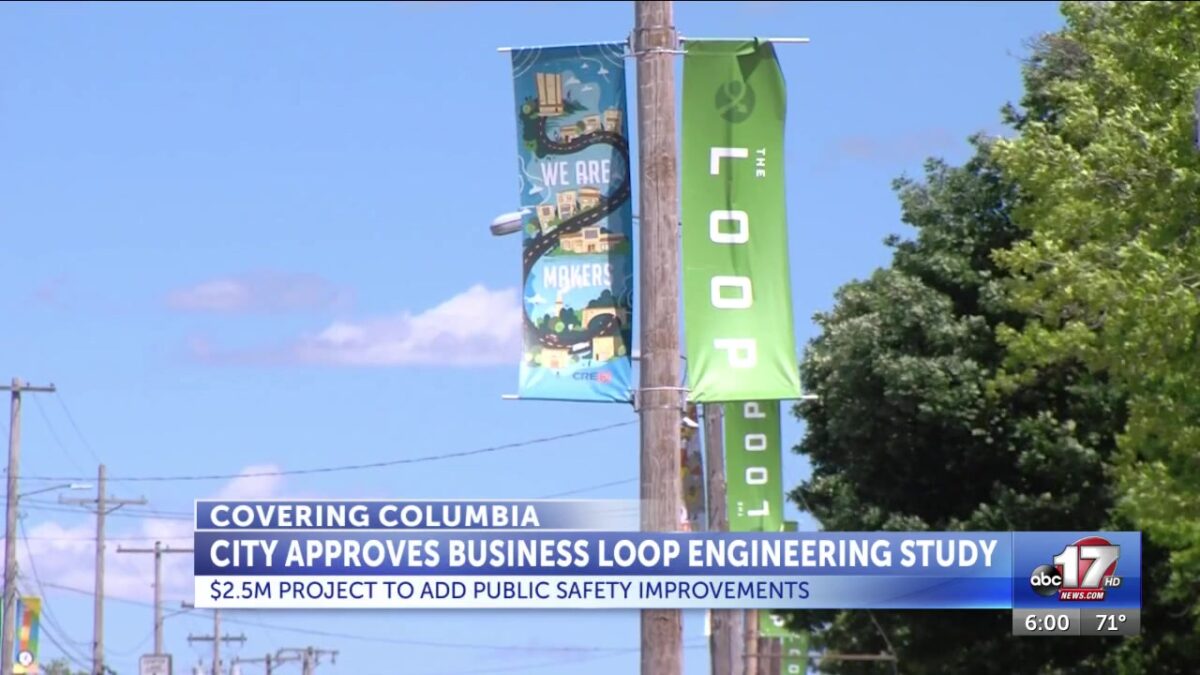Jessica Hafner
COLUMBIA, Mo. (KMIZ)
As of this week, Missouri leads the nation in the number of tornado warnings issued since Jan. 1, with 140 more warnings than normal.
The severe weather season ramped up in March and has been relentless ever since. Missouri typically averages around 50 tornadoes (2000-2024 average), and we have had more than 60 confirmed so far since Jan. 1.

Flooding was also an issue at the end of March into early April across southern and southeast Missouri, and on a day with multiple tornadoes reported, we also had dozens of wildfires raging across the state.
SEMA spoke with ABC 17 News on a rare quiet day in early May, as staff regrouped following damaging winds in the Springfield area. SEMA Director Jim Remillard said his decades of work with the Missouri State Highway Patrol prepared him for the role, but the experiences are always personal, no matter the magnitude of the storm.
“I always try to be very conscious of it’s an individual experience. It could just be five houses that are damaged or destroyed, but it’s five homeowners and five properties that we need to be aware of,” he said. “I try to remember the fact that it’s personal to the people experiencing the event.”
Before and after the storm
The National Weather Service in St. Louis provides briefings, and staffing is arranged ahead of time according to the forecast and expected severity of the incoming storms.
That staffing, or emergency support functions, consists of MSHP, MoDOT and the Missouri Division of Fire Safety. When severe weather is likely, those staff members report to the State Emergency Management Operations Center in Jefferson City.
In some cases, the forecast can warrant a preemptive state of emergency declaration from the governor, which allows for a faster post-storm response.
“It allows the state to respond to the community needs, and most of those are emergency protective measures just to save life,” Remillard said. “It allows us to rent generators to provide emergency life support, those types of things.”
Gov. Mike Kehoe said advancements in technology over the past several years have reduced response time following disasters.
“Our predictability, working with our partners at the National Weather Service and weather experts about what’s going to happen, has really allowed us to get a little bit more in front of these storms,” Kehoe said. “For both the tornadoes and flooding [earlier this spring], we were able to declare a disaster earlier to activate the National Guard and get some more preparedness out in the communities. Task Force 1 was deployed in advance as well. With technology, we can now geofence where those units are in certain areas. We can identify the commanders on the ground to make sure they know not only is that community in peril, but your personnel, make sure they’re in a safe place.”
Geographic information systems mapping is a newer tool that SEMA uses to keep track of damage assessments, tornado paths, pictures and incident reports.
“The nature of GIS is spatially related, so the types of information can vary a lot. We map damage assessments collected by the National Weather Service whenever they go out to survey after an event, as well as information from some of our strike teams, like Task Force 1. We’re also taking in weather data, so making sure that’s tracked so we have good indicators on what is the severity of the event in different portions of the state,” SEMA GIS specialist Lucius Creamer said.
GIS specialists can also keep an eye on hot spots to stay ahead of potential wildfires using satellites, and potential levee failures in flooding situations by using flood inundation mapping provided by NOAA.
After a storm hits, partners at the SEOC begin communicating with local emergency managers to get a grasp of the situation in their counties and from there dispatch troopers for life-saving response. Regional coordinators then go in and analyze the damage and assess the need for public and or individual assistance.
Damage assessments
To request a joint assessment with the federal government for public assistance, the total statewide damage cost must meet or exceed around $11.6 million. The table below shows the threshold each county in Mid-Missouri must meet. Individual assistance is a bit more subjective and depends on the number of homes and degree of damage.
County
Damage threshold
Audrain
$119,482.08
Benton
$91,539.68
Boone
$866,639.20
Callaway
$209,015.76
Camden
$201,756.40
Chariton
$34,965.76
Cole
$364,756.88
Cooper
$80,726.16
Gasconade
$69,827.68
Howard
$47,912.72
Macon
$71,786.48
Maries
$39,799.04
Miller
$116,687.84
Moniteau
$73,032.56
Monroe
$40,903.52
Montgomery
$53,439.84
Morgan
$99,148.32
Osage
$62,653.28
Pettis
$202,865.60
Phelps
$210,691.36
Pulaski
$254,667.60
Randolph
$116,659.52
Saline
$110,131.76
Kehoe has requested joint damage assessments with FEMA in coordination with SEMA for rounds of severe storms in March and April, and most recently following an EF-3 tornado that tore through St. Louis and claimed five lives on May 16.
Another tornado killed two people in southeast Missouri that same day.
State Disaster Recovery Coordinator Amanda Wilbers works with the state’s recovery support functions, including community assistance, health and human services, infrastructure, housing and agriculture. Ten regional coordinators are positioned across the state to scope out damage and relay needs back to SEMA.
Wilbers said one of the most important things people can do before a disaster is make sure they’re insured.
“We show up in communities that have just been devastated by a tornado, and a lot of the people didn’t have insurance or even renter’s insurance. So it’s very difficult to see that someone who maybe was already struggling to survive or with poverty has now lost their home in addition to that,” she said.
Destructive storms can turn neighborhoods upside down in a matter of minutes, leaving people wondering where to turn for help. That’s where faith-based and non-governmental organizations step in.
State Preparedness Coordinator Melissa Friel helps get those boots on the ground immediately.
“We work collaboratively to make sure that Missourians receive the greatest resources possible. You know, in Missouri, we have so many old big trees that fall on properties and fall on houses. They remove those kinds of debris. They feed folks, shelter them, provide emergency supplies like rakes, shovels, and also financial assistance to those impacted by storms,” said Friel. “They were in Joplin for about 10 years before the community was completely recovered.”
She said some of those same organizations were in Jefferson City for years following the 2019 tornado, a storm that hit too close to home.
“You go into these impacted areas and provide assistance, but there’s something different of being in your own community. I was listening to the scanners that night as we were monitoring the situation, and I’d hear a firefighter’s voice, ‘there’s so and so speaking,’ you just hear the timbre of the voice and the concern they’re having. These are our neighborhoods, these are our neighbors, our friends who were impacted, so that was truly an interesting and unique experience,” Friel said.
Being prepared
Almost every corner of Missouri has been touched by severe weather this spring. The most recent violent storm packed winds of 150 miles per hour as it tore through parts of St. Louis on May 16.
The severe weather season isn’t over, so it’s important to keep practicing your safety plan.
“Who are you going to call in a disaster, what are you going to do, if you don’t have a basement, where are going to go to be safe when Channel 17 lets us know there’s severe weather on the way? Who are your outside contacts? Oftentimes, phone systems get jammed, but you can text. I learned that in Joplin. I was able to text with our responders on the ground in Joplin,” Friel said.
May 22 marks 14 years since an EF-5 tornado hit Joplin, killing 161 people. Locally, it marks six years since an EF-3 damaged Jefferson City. Both communities came back together, stronger.
“It’s tragic, and to see what happens to these communities, your heart certainly goes out to them. But just as soon as you see tragedy you also see Missouri greatness. You see people coming out of nowhere, helping neighbors and helping people they’ve never met before. And you see communities get together and respond. In a little town, Piedmont, in the March storms, all of a sudden churches start opening up their basements, food pantries sprung up. People just start helping others when they really had no other place to go. It’s very inspiring to see how Missourians react to help each other, because we really are a great state and we have big hearts,” Kehoe said.
Click here to follow the original article.










